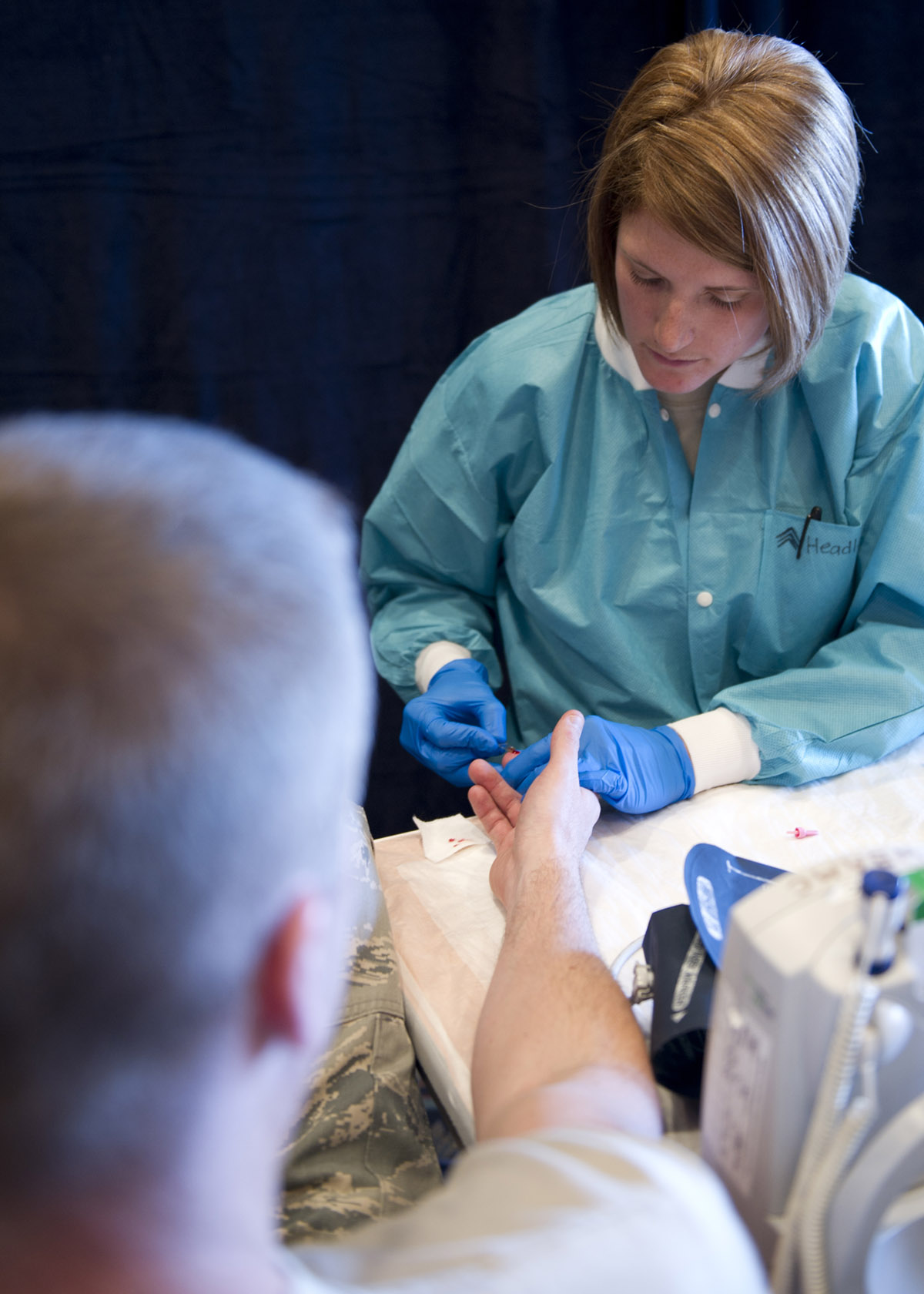Hematocrit and hemoglobin measurements are a part of a complete blood count, also known as CBC. Hemoglobin is the iron-containing oxygen-transport metalloprotein in the red blood cells. The hematocrit, also known as the packed cell volume (PCV) is the proportion of blood volume occupied with red blood cells. The complete blood count is a screening test used to examine different parts of the blood and check for symptoms of disorders such as anemia and infection. The test is often used to evaluate one’s overall health as even the slightest changes in normal levels of blood components often indicate health problems.
Hemoglobin
The main role of hemoglobin in the human body is to deliver oxygen to the living cells and tissues. The hemoglobin contains iron, able to bind oxygen molecules from the lungs and grills, and carry them away to the rest of the body. On the way back, hemoglobin binds carbon dioxide and brings it back to the lungs. A complete blood count determines how much hemoglobin is in the blood. Normal hemoglobin count results for adults are 13.5-17.5 grams/dL (135-175 g/L) for males, and 12.0-15.5 g/dL (120-155 g/L) for females.
Hematocrit
Hematocrit measures the amount of red blood cells that are in blood. The volume is determined by centrifuging heparinized blood in a capillary tube at 10.000 rotations per minute for five minutes. This process separates the blood into layers and the volume is calculated by measuring the lengths of the layers. The normal Hematocrit levels are independent of the body size. The normal levels are somewhere around 38.8-50.0% for men and 34.9-44.5 for women.
Low Hemoglobin and Hematocrit Levels
Both the hemoglobin and hematocrit are dependent on the plasma volume. Blood plasma is the yellow liquid component of the blood in which the blood cells in whole blood are normally suspended. Therefore, if a person is severely dehydrated, the hemoglobin and hematocrit will appear higher. If the patient is fluid overloaded, the results will be lower than their actual level.
Low hemoglobin levels can be caused either by decreased amount of hemoglobin molecules, as in anemia, or by decreased ability of each molecule to bind oxygen at the same partial pressure of oxygen. Other common causes of low hemoglobin include loss of blood, nutritional deficiency, bone marrow problems, chemotherapy, kidney failure, or abnormal hemoglobin.
The decrease of hemoglobin may thus happen without an absolute decrease of red blood cells, and then it leads to symptoms of anemia. Low hematocrit is tightly associated with anemia, since the anemia occurs as a result of lower blood cells. However, low values are relative to person’s age and sex. Pregnant women may also have slightly different values than normal. It is more common for doctors to use hemoglobin tests rather than hematocrit tests in order to make a diagnosis of anemia.
A total of 1022 patients who underwent surgical treatment in Harbin Medical University Cancer Hospital, China, from February 2006 to December 2013, were enrolled in this study.
- Our findings identified that low HCT was an independent risk factor for prognosis in patients with early and midterm (II-stage and IIII-stage) lung cancer.
- Our findings also showed that low HCT was in association with lower body mass index, which was related to poor prognosis. Red cells were associated with the immune status of the body.
- As this study showed that low HCT in the early and midstage lung cancer affected prognosis, treating patients with anemia before surgery with iron supplements, folic acid, and vitamin B12 could decrease the anemia of majority of patients, and such treatment was very necessary.


















Your thoughts on this
Loading...